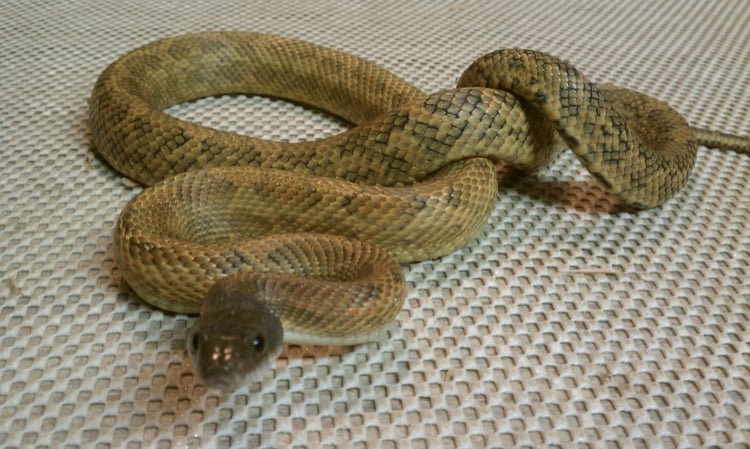So, now that I've compiled some data, compared animals and done some google searches it occurs to me that I have a couple things going on with my snakes.
To start, here's a pic of a typical Texas ratsnake caught right outside my house a few weeks ago. This is what they look like around here. (Notice how it's not biting me and crapping everywhere? Maybe they aren't all nippy or maybe I'm special.)
In other parts of the state the dark ground color (the color between the spots) is more yellow or orange. I am getting quite a few of these yellow phase/orange phase animals. This is probably the result of the original male from my breeding program who was the unusually yellow offspring of two typical yellow phase animals. But, for it to carry on it should be something that was recessive in the original typical NE TX female and has now been passed on to many of the babies. They frequently vary from lemon yellow to pumpkin orange.
note: I sold this orange snake a couple years ago.
regardless, these yellow/orange snakes are identifiable as being typical because they still show a consistent, typical pattern of spots along the dorsal surface (back).
The defining attribute for identifying my morph as hatchlings seems to be the breaking up of the stripe running through the eye and a consistently broken pattern on the dorsal surface (back)
what I'm looking for in my morph now a severely broken pattern that fades out with either a silver or yellowish color washing over everything.
So, the problem becomes what to do with all the yellow/orange phase snakes? Well, I guess, when it cools off this fall I will have to sell some snakes.
Final note: I have noticed that some of these snakes are typical, high strung, aggressive rat snakes and others are cuddly little bunny rabbits (by comparison) I need to note this trait for my breeding tree to see how the offspring compare.











